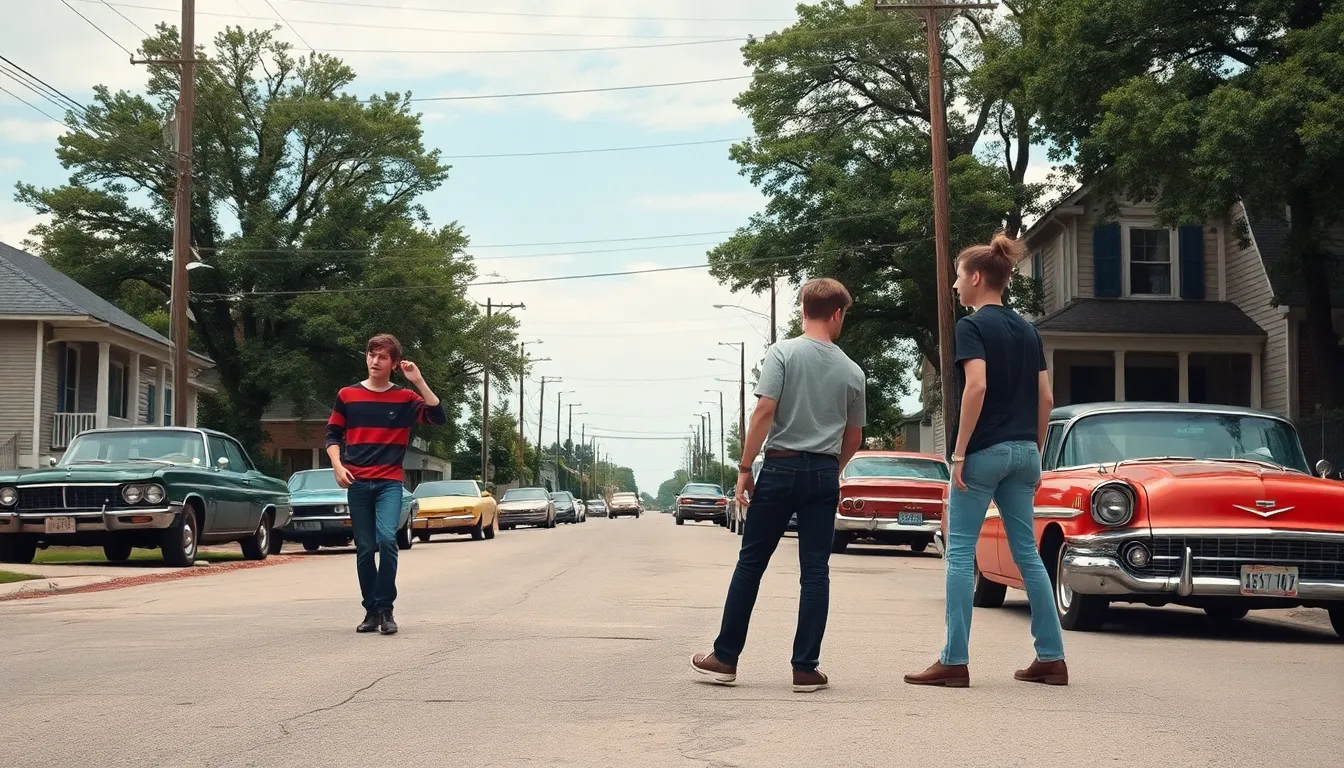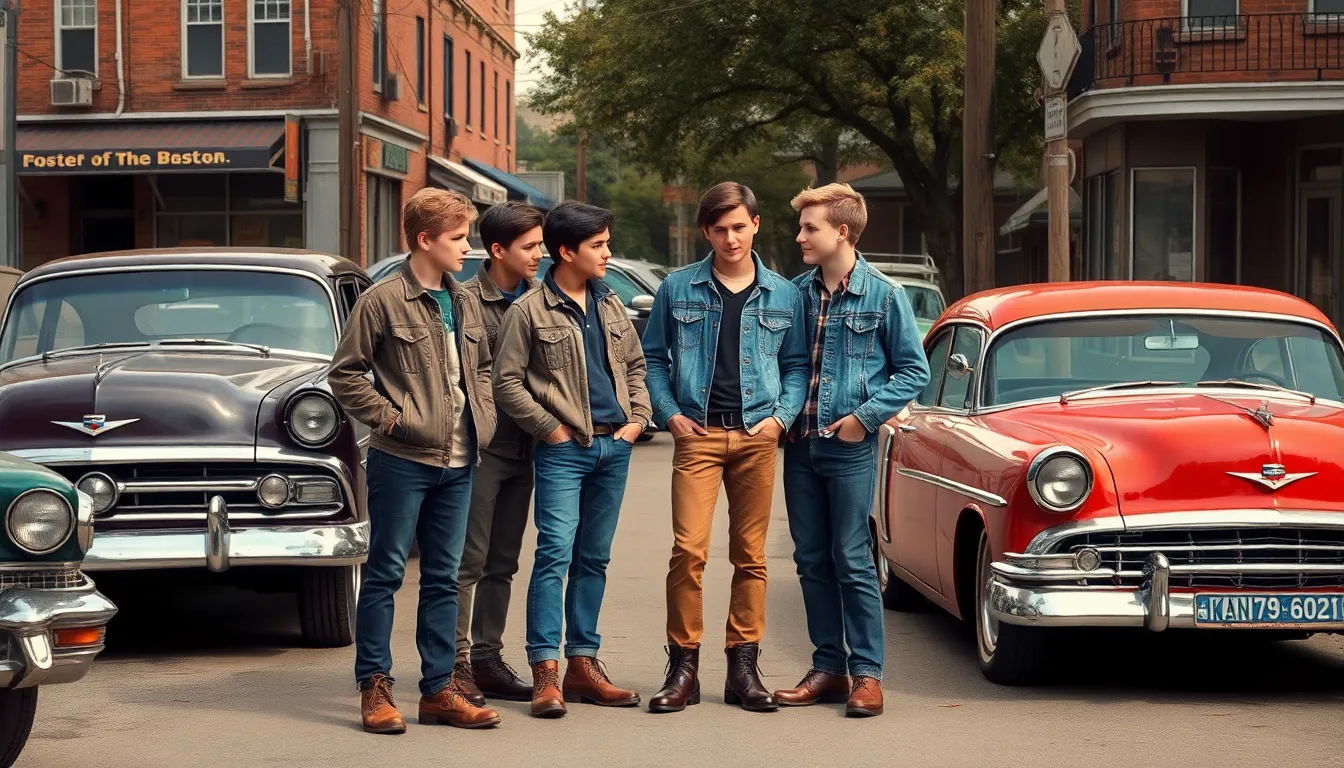Table of Contents
Toggle“The Outsiders,” a beloved novel by S.E. Hinton, has captivated readers since its release in 1967. With its vivid portrayal of teenage struggles and societal divides, many wonder if the story is rooted in real-life events. The characters, the Greasers and the Socs, embody the conflicts of youth, friendship, and identity, prompting questions about their authenticity.
While “The Outsiders” isn’t a true story in the literal sense, Hinton drew inspiration from her own experiences growing up in Tulsa, Oklahoma. The emotional depth and realism in the narrative resonate with readers, making it feel genuine. Exploring the connections between fiction and reality not only enriches the reading experience but also highlights the universal themes of belonging and resilience that define adolescence.
Overview Of “The Outsiders”
“The Outsiders” centers on the life of Ponyboy Curtis and his struggles within a divided society. The narrative highlights the conflicts between two groups: the Greasers, a group of working-class teenagers, and the Socs, affluent youths.
S.E. Hinton authored the novel, drawing from her experiences. The setting is Tulsa, Oklahoma, during the 1960s, a period marked by social and economic disparities. The vividly depicted characters display traits and challenges reflecting real-life adolescent issues.
The themes of friendship, loyalty, and the quest for identity resonate deeply. The Greasers feel marginalized, while the Socs experience their own pressures. Hinton’s ability to portray these universal struggles invites readers to reflect on their own lives.
Though “The Outsiders” is a work of fiction, it effectively mirrors real-life dynamics, allowing readers to engage with the narrative on a personal level. The authentic emotions and situations contribute to the story’s lasting impact within contemporary literature.
The Author’s Inspiration

S.E. Hinton’s experiences and observations greatly influenced “The Outsiders.” Her surroundings and interactions with peers shaped the narrative and its characters.
Real-life Events
Real-life events in Tulsa during the 1960s provided a backdrop for the novel. Neighborhood tensions existed between social groups, mirroring the Greasers and Socs. Hinton’s awareness of gang rivalries and conflicts among teenagers offered authenticity to the story, reflecting societal issues that continue to resonate today.
Personal Experiences
Personal experiences played a crucial role in the development of “The Outsiders.” Hinton faced the realities of adolescence, understanding the struggles of fitting in and dealing with peer pressure. Her life as a teenage girl in a divided community informed the emotional depth of characters, illustrating the complexities of friendship, identity, and insecurity. Hinton’s ability to combine personal insights with fictional storytelling created a relatable narrative that speaks to generations of readers.
Character Parallels
“The Outsiders” features characters that resonate with real-life archetypes, enhancing the story’s emotional and societal impact.
Fictional vs. Real Characters
Ponyboy Curtis represents the quintessential youth navigating societal division. His struggles reflect the experiences of many teenagers grappling with identity and belonging. The Greasers embody the working-class youth facing stigmatization, while the Socs symbolize the privileged class burdened with their own challenges. Hinton’s connections to real individuals in Tulsa during her adolescence lend authenticity to these characters. For instance, characters like Johnny Cade and Dallas Winston mirror the fears and dreams of many young people grappling with similar hardships and aspirations.
Symbolism in Characters
Characters in “The Outsiders” carry significant symbolic weight. The Greasers symbolize resilience and loyalty against adversity, while the Socs exhibit the facades of privilege and inner turmoil. Ponyboy’s love for literature and the sunsets symbolizes hope and a longing for peace amidst chaos. Johnny’s fascination with the concept of heroism reflects a desire for significance in a tumultuous world. These elements reinforce the narrative’s exploration of social divides, highlighting the universality of the characters’ experiences and struggles.
Themes Reflected in Reality
“The Outsiders” resonates with real-life issues through its exploration of class conflict and the enduring bonds of brotherhood and loyalty. These themes reflect societal struggles and personal relationships experienced by many.
Class Conflict
Class conflict serves as a central theme in “The Outsiders,” illustrating the stark divide between the Greasers and the Socs. The characters embody distinct social classes, with Greasers representing the working-class youth and Socs portraying the affluent suburban teens. This division highlights economic disparities and the resulting tensions. For instance, the Greasers frequently confront prejudice and marginalization, while the Socs grapple with issues of identity despite their privilege. Real-life events from the 1960s mirror these dynamics, demonstrating how socioeconomic status affects behavior, relationships, and community interactions.
Brotherhood and Loyalty
Brotherhood and loyalty manifest profoundly among the Greasers, showcasing the importance of solidarity in their harsh environment. Characters like Ponyboy, Johnny, and Dally demonstrate unwavering support for each other in times of crisis. This theme resonates with young readers who often seek connection and belonging in their social circles. Loyalty within the Greaser group highlights the resilience required to navigate a fragmented society, reinforcing the notion that strong friendships can provide comfort and safety amid adversity. The bonds portrayed in the novel echo the real-life experiences of youth forming support systems to cope with challenges, illustrating the deep emotional connections that thrive in the face of hardship.
Public Reception and Impact
“The Outsiders” garnered significant acclaim since its publication, becoming a cornerstone in young adult literature. Its exploration of societal divides resonated with generations, prompting discussions on class conflict and identity.
Cultural Significance
“The Outsiders” holds substantial cultural significance, representing the struggles of youth in divided communities. The novel’s candid portrayal of teenage turmoil and the search for identity sparked dialogue around mental health and social issues. Its themes of empathy, loyalty, and resilience have found relevance across various contexts, inspiring educational discussions in classrooms nationwide. The book has been a catalyst for understanding youth experiences, encouraging readers to reflect on the complexities of relationships and societal expectations.
Adaptations and Interpretations
Adaptations of “The Outsiders” have expanded its reach and impact. The 1983 film adaptation, directed by Francis Ford Coppola, brought the characters to life, introducing the story to new audiences. The film maintained the essence of Hinton’s narrative, capturing the raw emotions and tensions between the Greasers and Socs. Various stage productions and graphic novel adaptations have also emerged, allowing interpretations that emphasize different aspects of the story. Each adaptation contributes to the ongoing conversation around the themes within the original narrative, ensuring that “The Outsiders” continues to resonate with readers and viewers.
While “The Outsiders” isn’t a true story in the literal sense it draws heavily from S.E. Hinton’s personal experiences and observations in a divided Tulsa. The characters and conflicts reflect real issues faced by many adolescents navigating societal divides. This blend of fiction and reality enhances the narrative’s emotional depth making it relatable across generations.
The themes of loyalty resilience and the quest for identity resonate with readers highlighting the universal struggles of youth. As discussions around class conflict and identity continue to evolve “The Outsiders” remains a pivotal work in young adult literature inspiring ongoing dialogue and connection among its audience.







